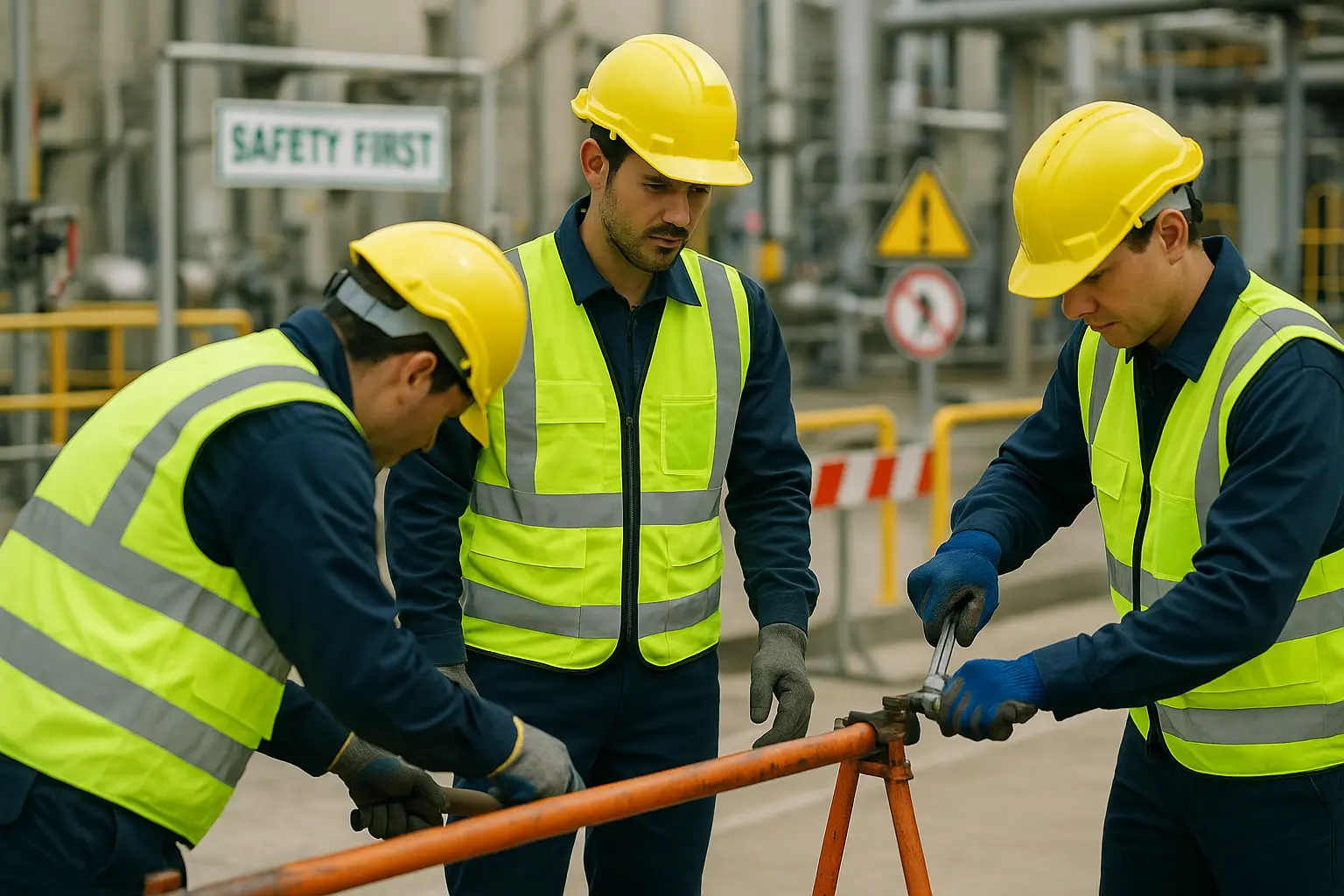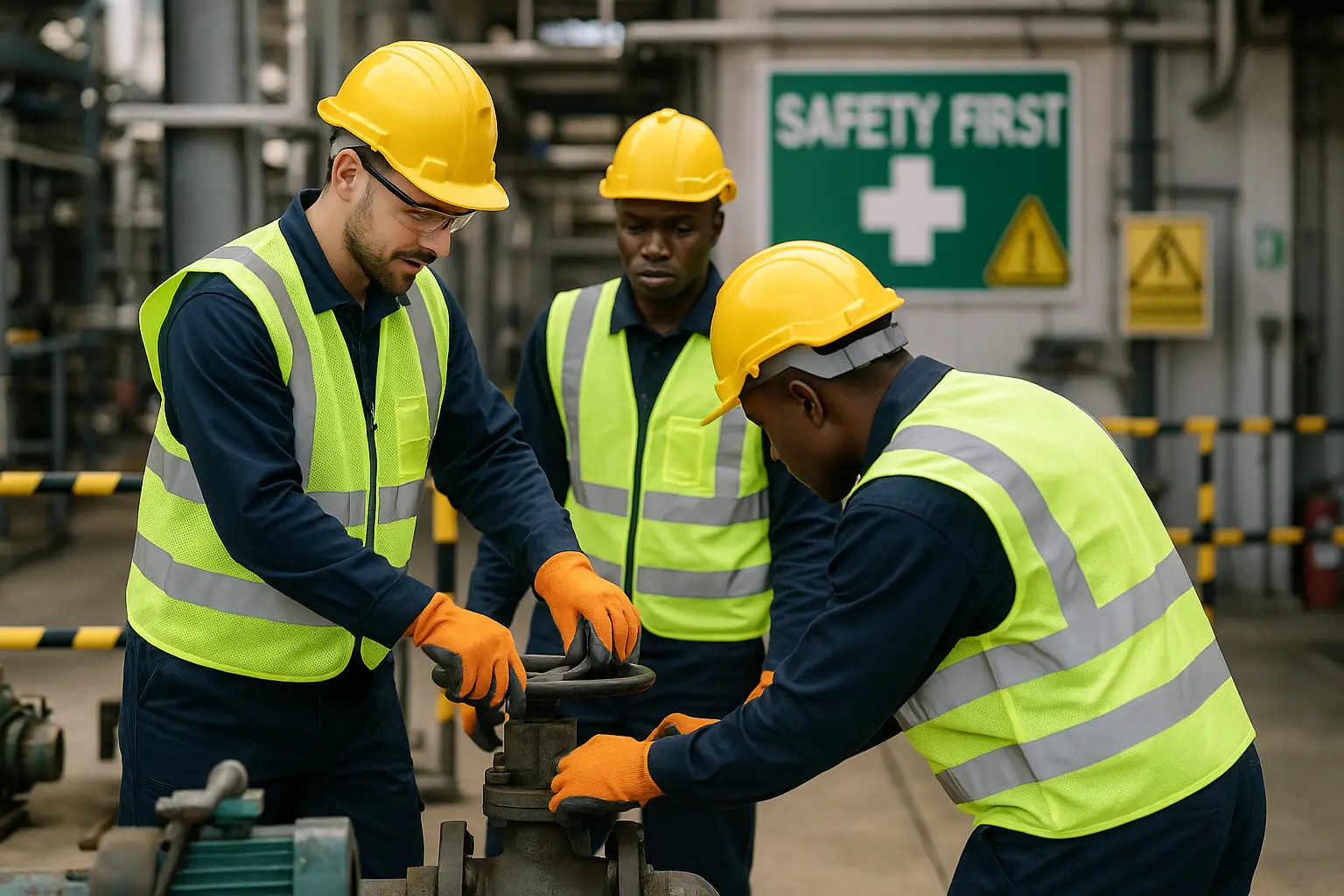In the fast-paced world of industrial operations, ensuring the safety of our workers is paramount. Every year, countless employees fall victim to workplace accidents—many of which are preventable. So, how do we create an environment that not only safeguards employees from harm but also promotes a culture of safety? By focusing on key steps that mitigate hazards and promote a proactive approach to safety, we can turn our work sites into models of safety and efficiency. Let’s explore five pivotal steps to reduce accidents on your construction or industrial site.
1. Comprehensive Training Programs
Training is the backbone of a safe workplace. It goes beyond the perfunctory orientation sessions and dives deep into the intricacies of job-specific safety procedures. We need to arm our workers with the knowledge and skills they need to navigate potential hazards effectively.
Why is training essential?
When employees understand how to use equipment properly, recognize the signs of hazards, and know emergency protocols, we significantly reduce the likelihood of accidents. Training sessions should be interactive and engaging, utilizing modern technology like VR simulations and digital modules to enhance learning. These sessions should also be recurrent, with periodic refreshers to keep safety knowledge sharp.
Effective Training Strategies:
- Personalized Learning Paths: Tailor training modules to meet the specific needs of different job roles, ensuring relevance and engagement.
- Simulations and Drills: Conduct regular safety drills and use simulations to provide hands-on experience in handling emergency situations.
- Feedback Loops: Encourage a two-way dialogue where employees can ask questions and provide input on safety practices, enhancing the learning experience.
By embedding a robust training culture, we establish a foundation that empowers workers to make safety their second nature.
2. Ensuring Proper Use of PPE
There’s a saying in the industry: “Personal Protective Equipment (PPE) is only as effective as its usage.” It’s critical that we prioritize the correct and consistent use of PPE to safeguard workers from potential injuries.
Understanding PPE Importance
PPE acts as the last line of defense against workplace hazards. From hard hats to safety goggles and protective gloves, each piece serves a crucial role in protecting workers from harm. However, simply providing PPE isn’t enough; we need to ensure that workers know how to use it correctly and understand its significance.
Steps to Encourage Proper Use of PPE:
- Education and Awareness: Conduct workshops that detail the importance of PPE and demonstrate its correct usage.
- Accessibility and Availability: Ensure that all necessary PPE is readily available to all employees at all times. Accessibility should never be a barrier to safety.
- Regular Inspections: Facilitate regular checks to ensure PPE is in good condition and replace worn-out or damaged items promptly.
By emphasizing the proper use of PPE, we can significantly reduce the risk of injuries and ensure that every employee returns home safely.

3. Identifying and Mitigating Hazards
A proactive approach to safety requires us to be vigilant about potential hazards in the workplace. Identifying these risks and taking early action can save lives and prevent severe accidents.
How to Efficiently Identify Hazards
A thorough risk assessment is crucial. This involves a detailed examination of the work environment, identifying everything from structural weaknesses to equipment malfunctions. Regular assessments are vital, as industrial sites can change rapidly, with new risks emerging as projects progress.
Steps to Mitigate Risks:
- Engage the Workforce: Encourage employees to report potential risks and near misses. This creates a culture of transparency and collective vigilance.
- Implement Safety Protocols: Develop and enforce protocols for each identified risk, from simple checklists to comprehensive emergency response plans.
- Continuous Monitoring: Use technology like IoT devices and AI analytics to monitor the site constantly, allowing for real-time responses to potential threats.
With a focused approach on detecting and addressing hazards, we can create a work environment where safety is seamlessly integrated into daily operations.
4. Promoting a Safety-First Culture
Creating a safety-first culture is about embedding safety into the DNA of our organizational practices. It’s not just about the rules; it’s about the mindset that prioritizes safety above all else.
Instilling a safety culture
A safety-first culture begins with leadership. When leaders emphasize the importance of safety, it permeates down to every level. Open communication, where every worker feels valued and heard, is crucial in fostering a safe environment.
Practical Steps to Promote Safety Culture:
- Lead by Example: Leaders and managers should exhibit safe behaviors consistently, setting the standard for others to follow.
- Incentivize Safe Practices: Recognize and reward teams or individuals who prioritize safety, reinforcing positive behavior.
- Safety Committees: Establish committees that include representatives from various departments to focus on safety initiatives and improvements.
By nurturing a culture where safety is everyone’s responsibility, we establish an environment where the well-being of workers is always at the forefront.
5. Implementing Modern Safety Technologies
In today’s rapidly evolving industrial landscape, technology is an indispensable ally in our quest for enhanced safety. Implementing the latest safety technologies can lead to substantial improvements in accident prevention.
Unlocking the Potential of Safety Technologies
From wearable tech that monitors vital signs to drones that conduct site inspections, technology offers innovative solutions to age-old problems. These advancements not only increase safety but also improve efficiency and productivity.
Innovative Tech Solutions:
- Wearable Devices: Equip workers with smart wearables that track fatigue levels, heart rate, and environmental conditions, alerting them to take preventive actions.
- Drones and Robotics: Use drones for aerial inspections and robotics for handling dangerous tasks, minimizing human exposure to risks.
- AI and Predictive Analytics: Leverage AI to analyze data and predict potential accidents, allowing preemptive measures to be put in place.
By embracing these modern technologies, we can create a safer workplace that not only protects employees but also sets a standard for operational excellence.
The journey to a safer workplace is ongoing and requires a collaborative effort from every level of the organization. By implementing these key steps—comprehensive training, proper use of PPE, hazard identification, fostering a safety-first culture, and leveraging modern technologies—we can significantly reduce the risk of accidents and create an environment where every worker feels valued and protected. Let’s lead the way in transforming our industrial sites into bastions of safety and innovation, paving the path for a safer, more responsible future.
FAQ
What are the main factors contributing to workplace accidents in industrial settings?
Workplace accidents in industrial environments often stem from factors such as inadequate training, lack of proper safety equipment, poor communication, and failure to adhere to safety regulations and protocols.
How can regular training help in reducing accidents in an industrial workplace?
Regular training ensures that all employees are well-versed in safety protocols, know how to handle equipment safely, and can recognize potential hazards, thereby significantly reducing the likelihood of accidents.
Why is it essential to conduct regular safety audits on industrial sites?
Conducting regular safety audits helps identify potential risks, ensures compliance with safety regulations, and provides an opportunity to implement corrective measures before accidents occur.
What role does personal protective equipment (PPE) play in enhancing safety in industrial environments?
PPE acts as the first line of defense against potential hazards, protecting workers from injuries related to chemicals, machinery, and other industrial risks. It’s crucial for minimizing the impact of accidents when they occur.
How can fostering a culture of safety contribute to reducing workplace accidents?
A culture of safety encourages employees to prioritize safety, report hazards, and follow safety protocols. This collective commitment to safety helps create a safer work environment, reducing the frequency and severity of accidents.


